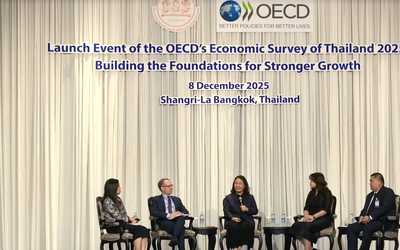Understanding Corporate Thailand I: Finance
Abstract
This study analyzes the entire universe of registered firms in Thailand. There are five main findings. First, firm size distribution is smooth, with a majority of firms in the middle of the distribution; the apparent ”missing middle” phenomenon is entirely driven by arbitrary categorization of small and medium enterprises (SMEs). Second, the Thai corporate sector is very concentrated; the concentration has also risen over the past decade. Third, larger firms seem to have advantages over smaller firms regarding financing. Fourth, smaller firms tend to disproportionately invest less in fixed assets than larger firms. Finally, firms in the middle of the size distribution exhibit the highest return on asset (ROA) but have low leverage, consistent with the symptom of credit constraints. Large firms, in contrast, seem to have lower ROA but higher debt. Meanwhile, smaller firms seem to have both lower leverage and ROA. Overall, our results suggest that the Thai corporate sector exhibits both inefficient capital allocation and financial vulnerability. The paper has important policy implications on resource allocation in the economy, particularly, regarding appropriate assistance provided to small and medium enterprises.










